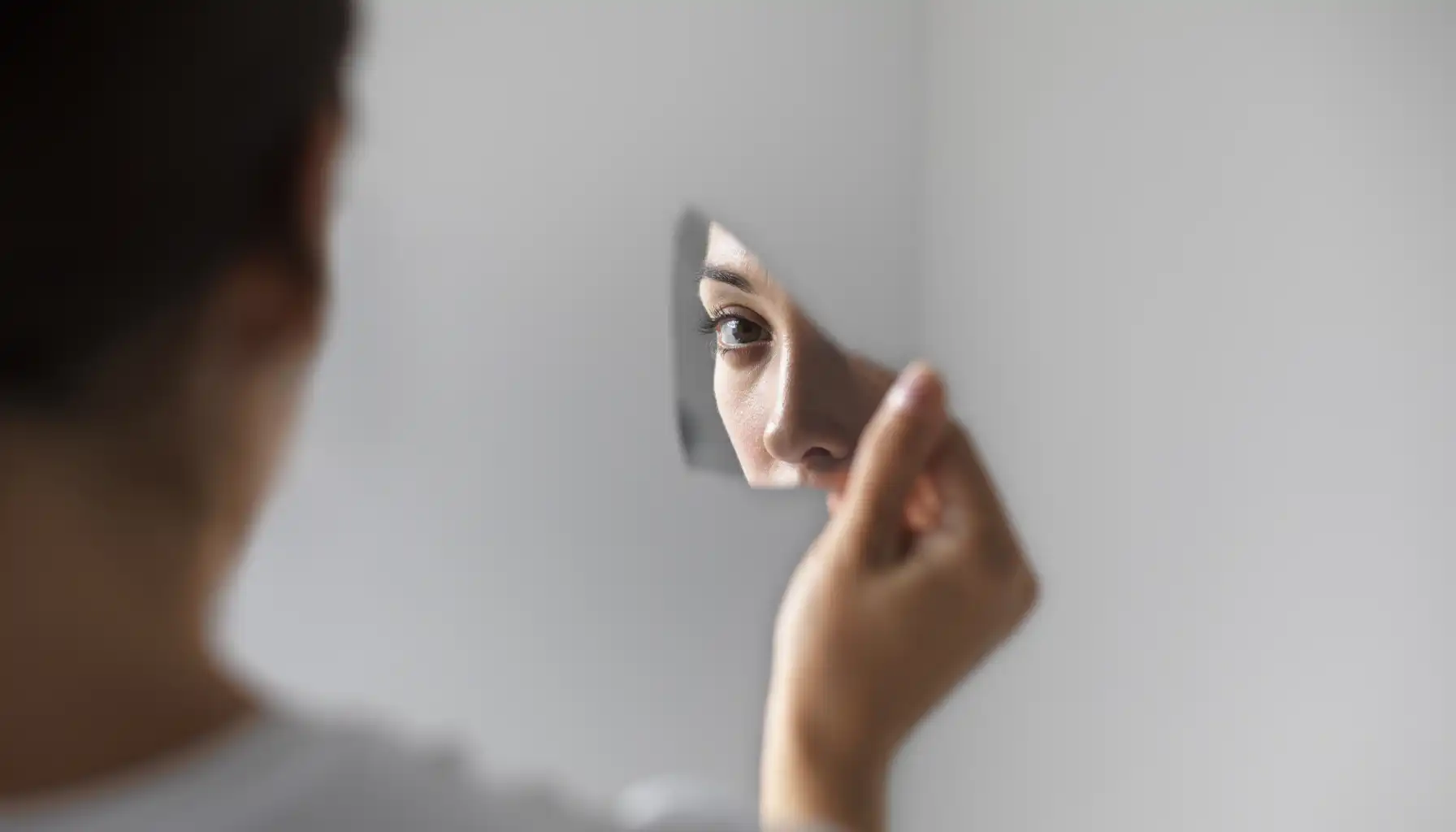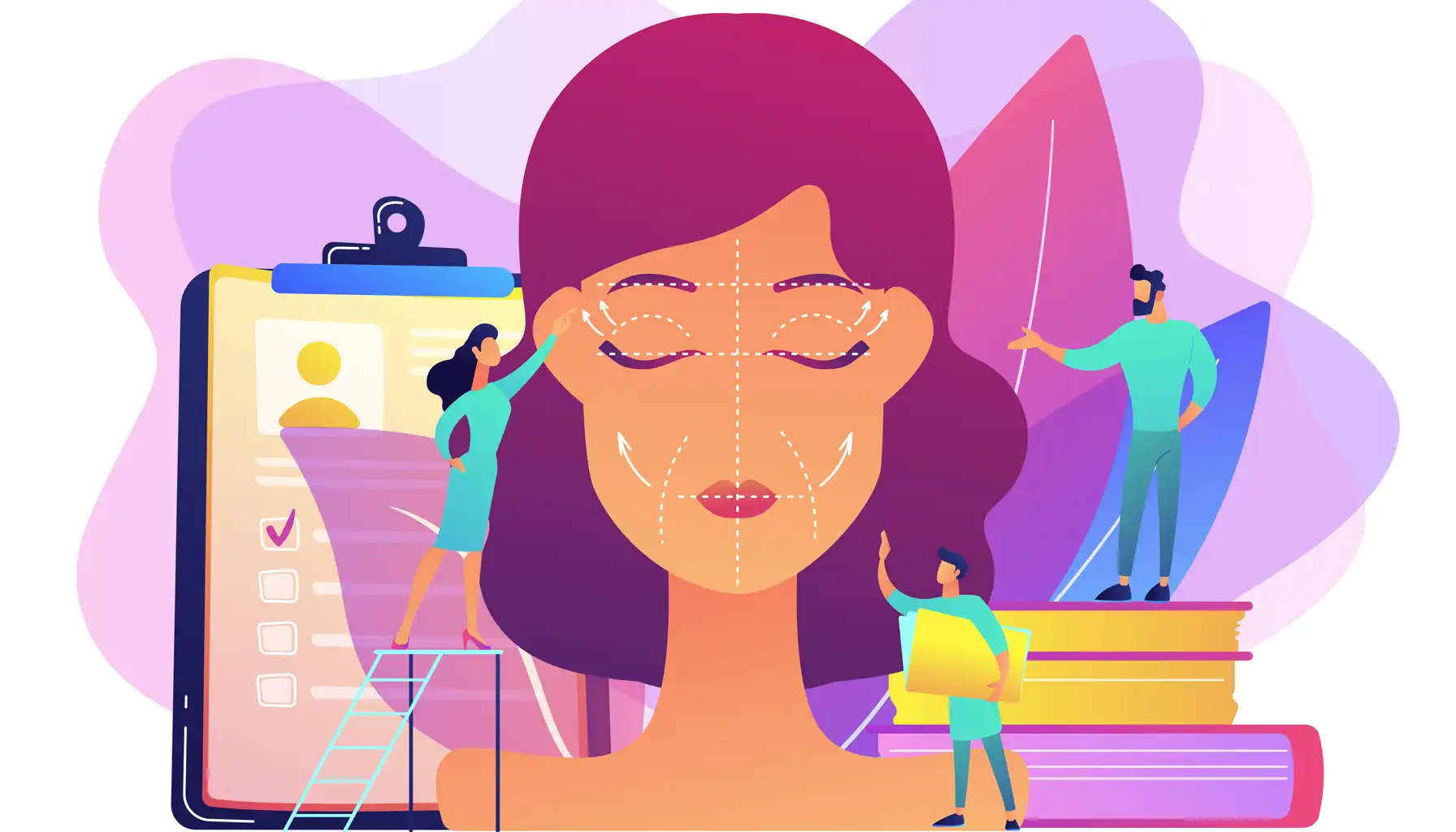Body Dysmorphophobia: The Fear of Flaws You Cannot See

Contents:
Mens sana in corpore sano.
The body is a vessel – beautiful by its own nature, regardless of the imagined flaws we may fixate on. This take has always been firmly embedded in philosophy: the Greeks, in particular, spoke of kalos kagathos, i.e., an ideal that united outer appearance (i.e., a physical form) with inner virtue (i.e., a character to explore).
They knew: the human forms themselves may carry the burden of their value outside of the shifting standards of beauty and the truth of perception, which can distort or obscure the harmony they naturally hold.
However, humankind has strayed far from the propositions of Ancient Greece. Today, one may witness a world ruled by rigid beauty ideals, filters, "enhanced" photos of influencers, and other deformities promoted by media, culture, and the beauty industry as a whole. The truth of a new reality is quite cruel – this may result in dysmorphophobia, or body dysmorphic disorder (BDD). But what is dysmorphophobia, and how may cognitive training help reframe distorted self-perceptions in the end?

Historical and Conceptual Background
The concept of dysmorphophobia is not newly coined. In fact, the term denoting this condition comes from the Greek dysmorphia (“ugliness”) and was first used by Italian psychiatrist Enrico Morselli in 1891 to describe the obsessive “fear of being deformed”. There was a paradox: although no real defect was obviously visible, the patients would experience suffering, feeling that their appearance was crooked.
Nevertheless, the concerns were even more ancient, for Herodotus, for instance, mentions myths of unattractive figures seeking relief from their “flaws”.
All in all, it was and is mainly about a symbolic expression of inner conflict, projected onto a certain body part (Anukriti Varma et al. “Recognizing Body Dysmorphic Disorder”), or, rather, a language game, where one's identity may be narrated through the body, yet distorted in the telling (Elena Faccio et al. “Measuring up to Measure” Dysmorphophobia as a Language Game).
Modern psychiatry places this condition within the spectrum of obsessive-compulsive and related disorders. As per the DSM-5, the dysmorphophobia meaning can reveal the reoccupation with perceived flaws that are minimal or invisible to others, which can be characterized by mirror checking, excessive grooming, other repetitive behaviors, and abnormalities in serotonin regulation and in the way the brain processes visual information.
Dysmorphophobia is not a matter of vanity – it is a real disease.

Dysmorphophobia Symptoms and Clinical Features
The first step toward healing is recognizing the struggle and its meaning. The dysmorphophobia definition suggests that the mind can transform imagined imperfections into a source of constant distress, which can be manifested differently. This mainly depends on the personal traits, mindset, and other individual-related circumstances, which others may not even be aware of.
So, here is what one may pay attention to so as to detect the fear of deformity in others (and in themselves, too).
Category | Description |
Preoccupation with appearance | Persistent focus on minor or imagined defects in the body or face. |
Repetitive behaviors | Mirror checking, excessive grooming, skin picking, or seeking reassurance. |
Avoidance/Social impact | Avoiding public spaces, gatherings, work, or social interactions due to fear of scrutiny. |
Distorted self-image | Strong belief in being unattractive, ugly, or deformed, despite evidence to the contrary. |
Emotional distress | Anxiety, shame, depression, irritability, or intense self-consciousness. |
Functional impairment | Difficulties in work, school, or relationships; obsession may dominate daily life. |
Risk behaviors | Repeated cosmetic procedures, extreme dieting, or other harmful attempts to “fix” perceived flaws. |
Causes and Contributing Factors of the Fear of Deformity
Just like any other specific phobia or mental deviation, it is influenced by a number of factors simultaneously, with different levels of severity and impact on daily functioning.
Biological factors, i.e., serotonin imbalance and atypical brain activity affecting visual perception.
Psychological factors, i.e., low self-esteem, perfectionism, SAD, genetic anxiety, and unresolved emotional conflicts.
Sociocultural factors, i.e., strict beauty standards, media influence, social media filters, and cultural ideals of attractiveness.
Life experiences, i.e., unreasonable criticism, childhood bullying, trauma, or overly stressful family environments.
Developmental timing, which often emerges during adolescence, a period of heightened self-consciousness.
Diagnosis and Criteria

When in clinical settings (which is the most appropriate place to get diagnosed and treated), the process of medical examination begins with a psychiatrist, who analyzes medical and psychological history, including one's concerns about appearance, the patterns of symptoms, and other forms of manifestation of this disease.
So as to make this process clear and more penetrating, clinicians rely on structured tools like the Body Dysmorphic Disorder Questionnaire (BDDQ) or DSM-5 criteria to confirm the diagnosis and finally find the most productive ways to cope with it. At this stage, it is urgent to cross out other conditions, which can look similar and be characterized by the same symptoms, e.g., eating disorders, depression, or obsessive-compulsive disorder proper.
Nonetheless, the extent of preoccupation and functional impairment – these are the main aspects that should be considered first (especially when it comes to severe cases of this condition, like penile dysmorphophobia disorder).
Treatment Approaches and Useful Strategies
But how to defeat your inner demons and break free from intrusive thoughts of not being “good enough” in appearance? As a rule, healthcare specialists combine therapy, medical support, behavioral techniques, and cognitive exercises to get the most out of this experience and let their patients feel better.
Approach | Description | Benefits |
Structured psychotherapy targeting distorted thoughts and compulsive behaviors. | Reduces obsession with perceived flaws, improves self-perception, teaches coping strategies. | |
Medication (SSRIs) | Selective serotonin reuptake inhibitors prescribed by a psychiatrist. | Decreases obsessive thoughts, lowers anxiety, stabilizes mood. |
Behavioral strategies | Limiting mirror checking, mindfulness meditations, gradual exposure to feared social situations. | Reduces compulsive behaviors and avoidance, promotes emotional sobriety, strengthens confidence in social interactions. |
Supportive interventions | Family education, peer support, stress management, lifestyle adjustments. | Provides emotional support, improves adherence to treatment, lowers distress. |
A Note on Early Support
Even before consulting a doctor, you are encouraged to take safe and accessible steps toward mental well-being. One option is cognitive training, which helps strengthen the mind’s resilience, focus, and problem-solving skills, all of which can support healthier self-perception after all.
Among the apps that may definitely be worth using is Mind Elevate, i.e., an innovative tool with more than 35 games, designed to enhance:
Memory retention
Attention and concentration
Logical reasoning
Math fluency
Musical perception

No one is perfect, and everyone is perfect in their own way. Should you feel insecure, seek the approach that works best for you: through self-acceptance, therapy, safe cosmetic procedures, or strengthening your mind. At the end of the day, it is about your health – both mind and body.





